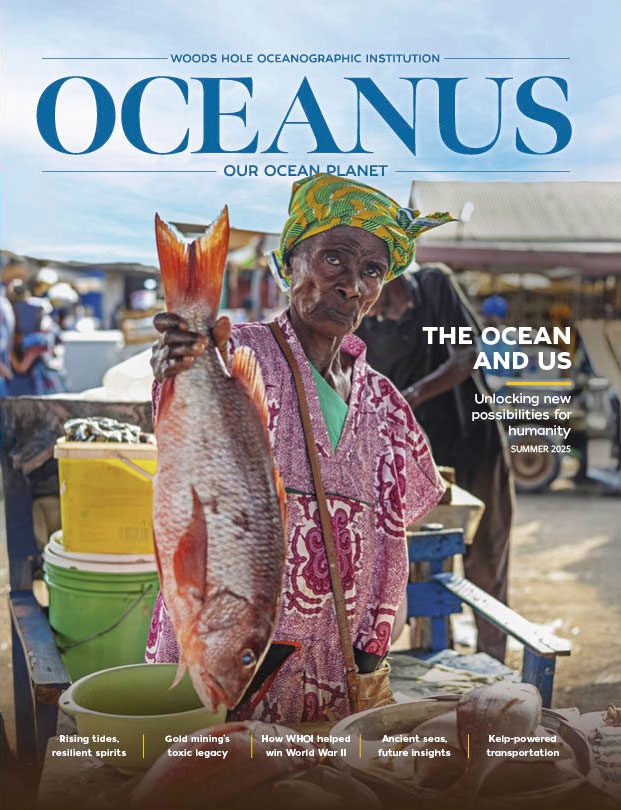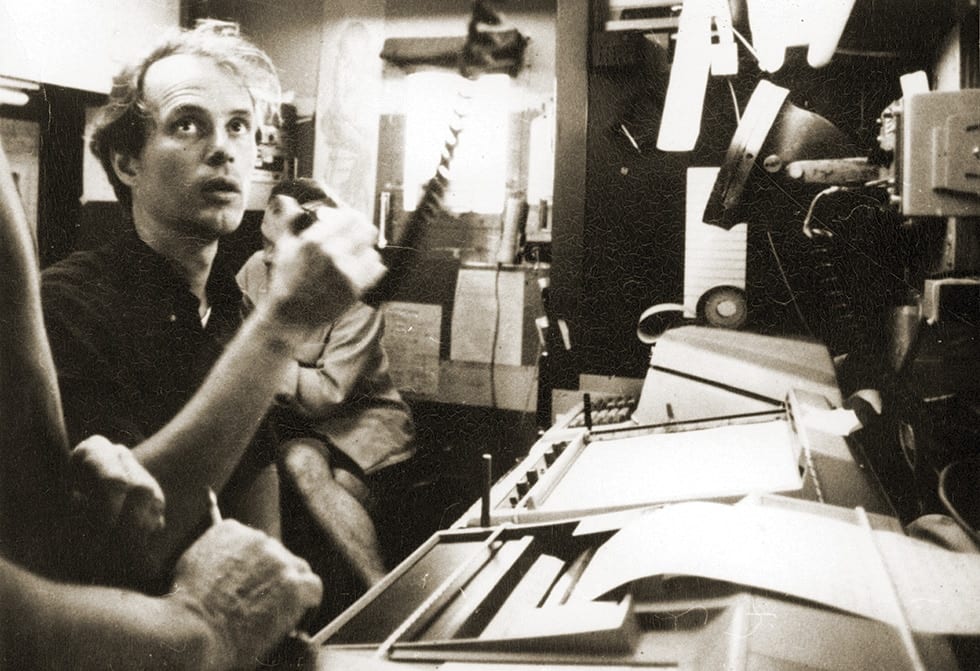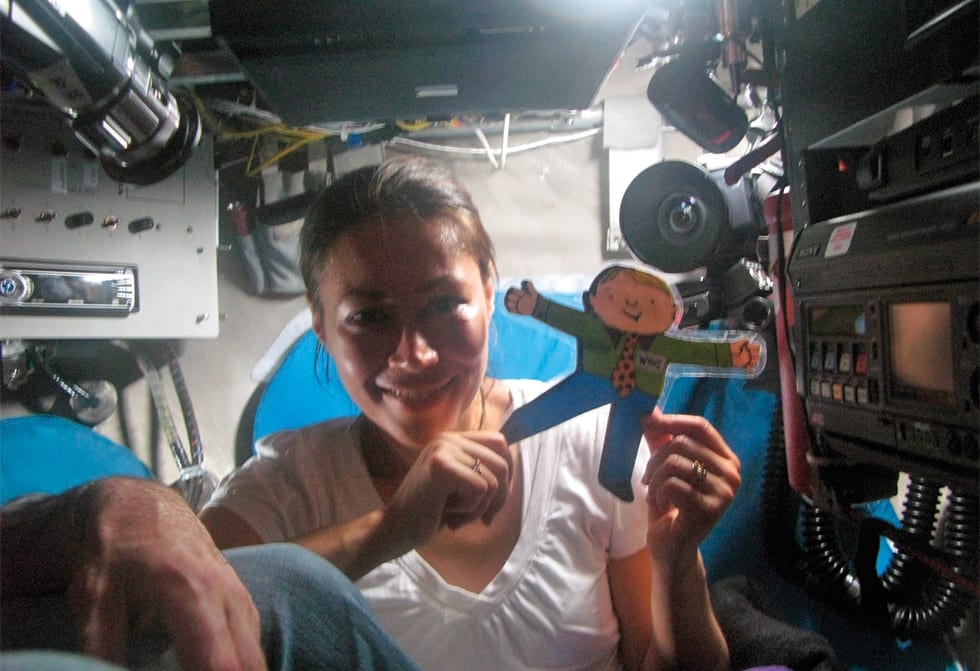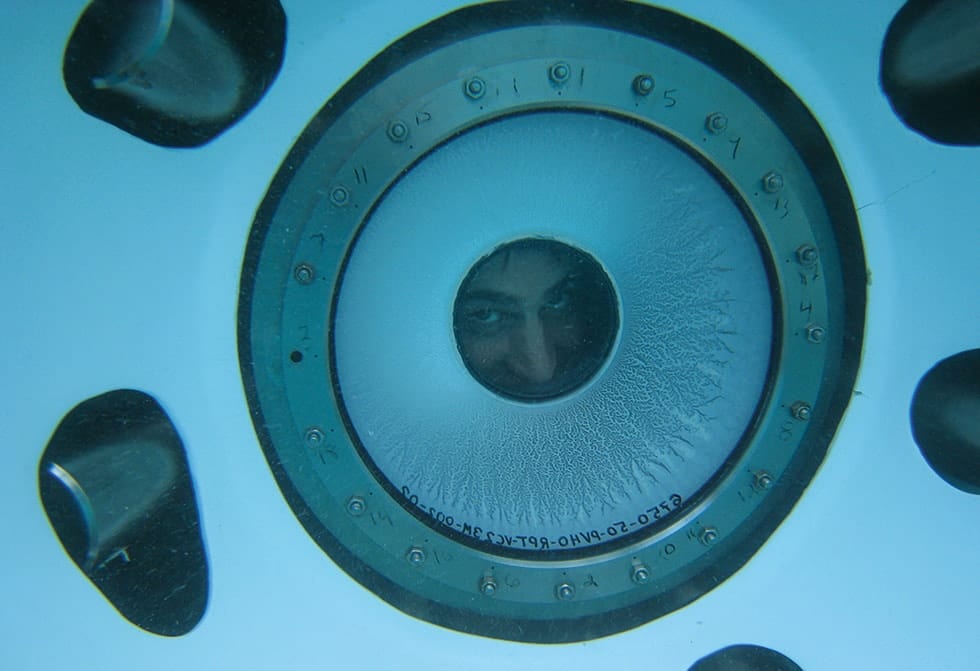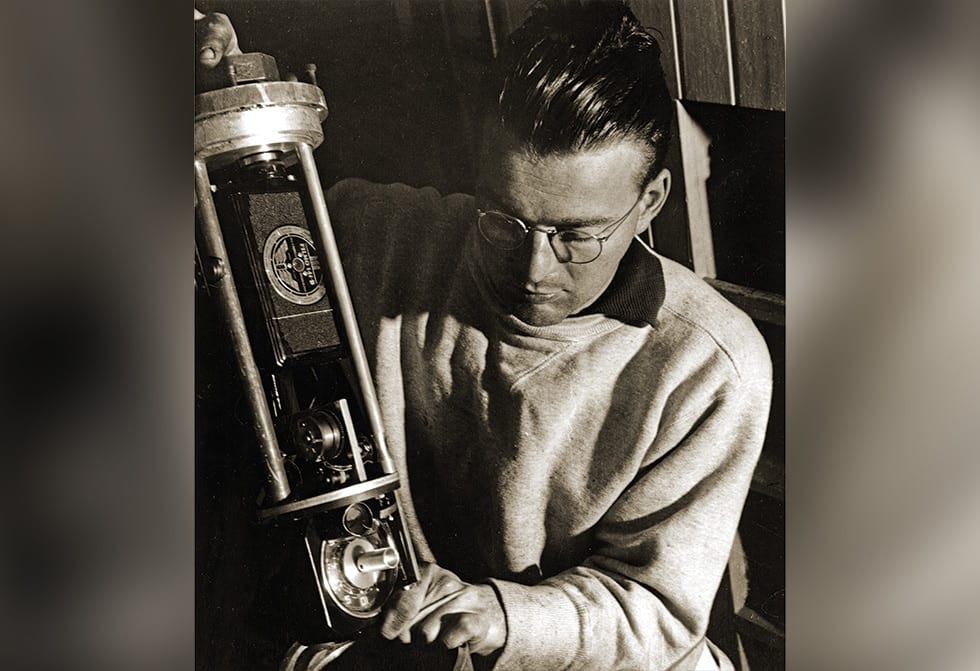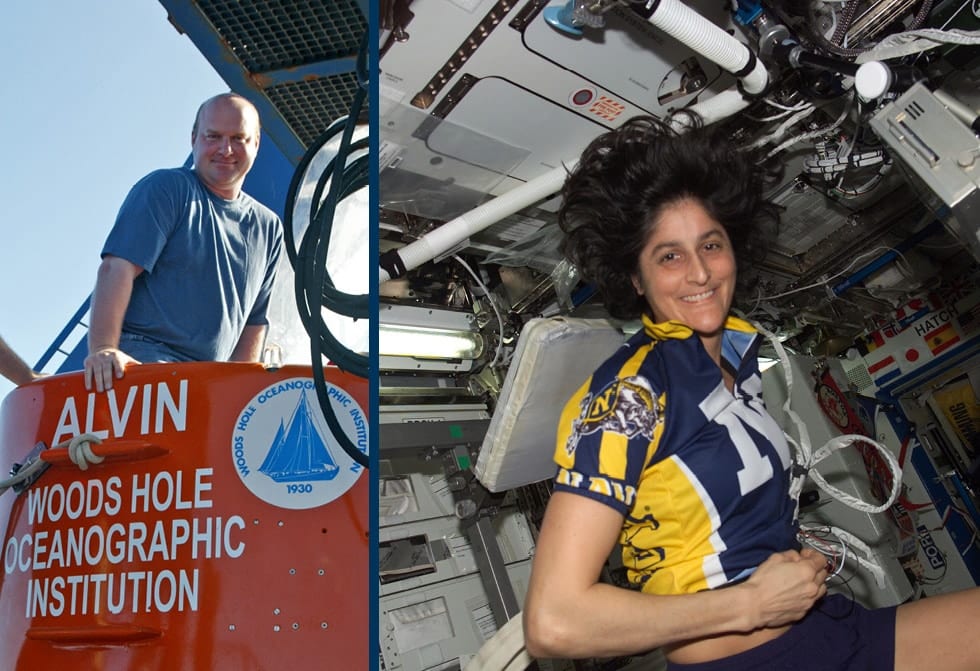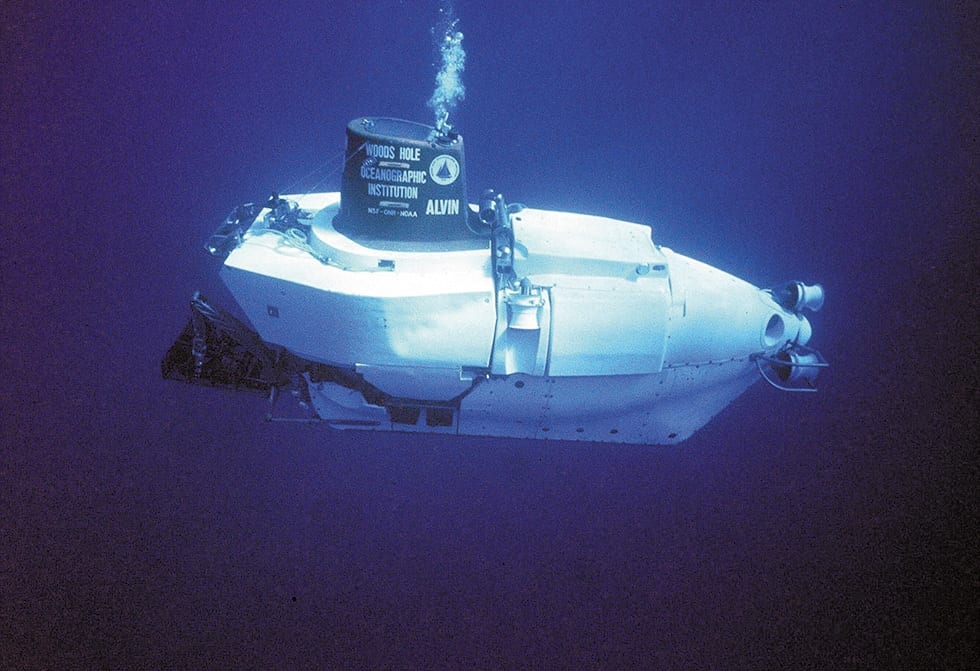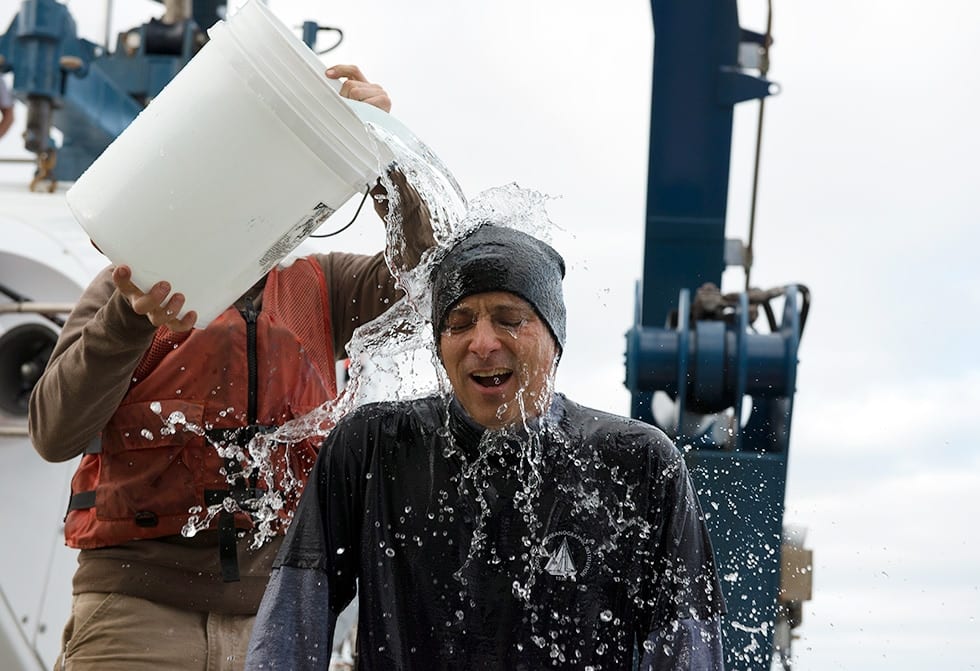Has Alvin ever gotten stuck?
(WHOI)
Yes. Once in 1975, Alvin drove into a fissure. Before the pilot could tell that the fissure’s walls were narrowing, the submersible became wedged in the crack. Initial attempts to maneuver out failed. Finally, the pilot backed out, to the relief of Alvin’s passengers and the ship’s crew.Has anyone famous traveled in Alvin?
(WHOI)
Yes. Walter Cronkite (the late broadcast journalist); Rita Colwell (former director of the U.S. National Science Foundation); William Broad (Pulitzer Prize-winning writer for The New York Times); Gary Comer (founder of the Lands’ End clothing company); Vinod Khosla (venture capitalist); and Ann Curry (above, television news journalist).What do divers do on the way down?
The pilot and two observers prepare notes, data sheets, and recorders for logging research information. They layer on hats and sweatshirts (it gets colder the deeper you dive) and listen to music (typically chosen by the pilot).
(WHOI)How many people have been Alvin pilots?
Since 1964, the job of driving Alvin has gone to just 38 men and one woman. Compare this to 74 space shuttle commanders.
(Rod Catanach/WHOI)How did Alvin get its name?
The submersible is named for Allyn Vine, a WHOI engineer and geophysicist who helped pioneer deep submergence research and technology.
(Alfred H. Woodcock/WHOI)Is there a bathroom in Alvin?
No. On a wall inside Alvin‘s support ship Atlantis, there is a sign that reads “PB4UGO.” Experienced divers urge newcomers to take the sign seriously. If divers absolutely must go, they have to use a bottle.
A long-distance phone call?
On January 26, 2007, the first-ever phone conversation between inner and outer space took place. NASA astronaut Sunita Williams, orbiting Earth on the International Space Station, chatted with WHOI biologist Tim Shank in Alvin‘s sphere on the seafloor on the East Pacific Rise.
(Left: WHOI; Right:NASA)What is the temperature in Alvin?
The average temperature outside the submersible is usually around 35°F. Inside the sub, with all the heat emitted by electronics and three people, it's around 45° to 50°F.
(WHOI Archives)Do Alvin pilots have any special traditions?
Most people receive flowers, plaques, or speeches to honor a special achievement. Seagoing folks have their own, sometimes quirky, rituals. Upon their return to the surface, people who dive in Alvin for the first time are greeted with a bucket of ice-cold water on the deck of the research vessel Atlantis. Engineering assistant Phil Santos got his traditional frigid baptism after his first dive in March 2014.
When a pilot makes his or her first dive, initiation into that small fraternity involves being doused with mud from the seafloor.
(Chris Linder /WHOI)
Alvin‘s Fun Facts
Amazing, bizarre, and just plain interesting
Related Articles
- The story of a “champion” submersible
- Robots to the Rescue
- Who is Alvin and what are sea trials?
- 7 Places and Things Alvin Can Explore Now
- The story of “Little Alvin” and the lost H-bomb
- Meet the Alvin 6500 Team: Lisa Smith
- Overhaul to take Alvin to greater extremes
- Meet the Alvin 6500 Team: Rose Wall
- Racing an undersea volcano
